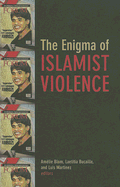|
Reviewed by Jonathan Eric Lewis, Juris Doctorate candidate at the University of Connecticut School of Law The Enigma of Islamist Violence is a collection of essays written by primarily French scholars who seek to understand why Islamist groups have utilized violence in order to achieve political goals. Although the topics of the essays vary, the editors’ main point is to emphasize that Islamist groups must be understood as local groups, rather than part of a global Islamist jihadi movement. In the foreword, they write that “by determining the individual and collective social and political motivations behind acts of violence, it becomes possible to take some distance from Islamist propaganda: in reality, a worldwide war of religion has not replaced local struggles…” While the emphasis on localism is a welcome counterweight to analyses of Islamism that seek to cast all Islamist movements as part of a pan-Islamic jihad against the West, this particular volume falls short. Many of the essays simply lack necessary historical context and rely too heavily on academic jargon. Latetitia Bucaille’s chapter on Palestinian homicide bombings, for instance, states that her “hypothesis is that the intensification of the suicide attacks constitutes an attempt on the part of the Palestinians to alter their relationship with the world at large and redefine their place in history.” Statements like this do little to persuade the reader to continue reading the essay. Furthermore, factual inaccuracies can be found throughout her essay. For instance, Bucaille writes that the years of the First Intifada were 1978 to 1993. In reality, the First Intifada began in 1987. She also writes of the “suicide bombing phenomenon during the 1990s in the context of the al-Aqsa Intifada” when, in fact, Ariel Sharon’s visit to the al-Aqsa Mosque—which allegedly provoked the violent actions of the Palestinians—was in September 2000. Bucaille’s assertion that the increase of suicide attacks after 2000 was in part “the result of the failure of other means of struggle” has become a platitude of much academic literature. The Palestinian turn to homicide bombings, while horrific, is perhaps not that enigmatic after all. The goal of the movement was to kill as many Israelis as possible and to provoke the Israeli public to demand that their government make further territorial concessions. While Bucaille is correct that the suicide attack strategy was a failure, she is wrong to assert that the attacks “have reinforced radical tendencies in Israeli public opinion.” The Israeli public’s approval of necessary security measures is hardly “radical.” Luis Martinez’s essay on Islamist violence in Algeria is significantly better than Bucaille’s chapter on the Palestinians. He provides an interesting overview of the three main Islamist groups in Algeria—the Armed Islamic Group (GIA), the Army of Islamic Salvation (AIS), and the Salafist Group for Preaching and Combat (GSPC) (which now goes by the name of al-Qaeda in the Islamic Maghreb)—and the ways in which each of the groups has utilized violence. Martinez’s analysis of why Algerians did not often resort to suicide bombings in the 1990s is thought-provoking. “First of all, confidence that the armed Islamist groups would defeat the regime led to a traditional guerrilla strategy.” Now that Algerian Islamists realize that overthrowing the Algiers government is no longer a possibility, Martinez suggests that suicide attacks in Algeria are more likely. The accuracy of his prediction was borne out by the recent spate of suicide bombings in Algeria in the past month, bombings for which the al-Qaeda in the Islamic Maghreb have taken claim. Military and political strategists interested in countering terrorism in North Africa thus would benefit from paying close attention to Martinez’s analysis, especially in light of these recent attacks. While Martinez’s chapter is worth reading, this volume is overall less impressive than it could have been. Serious academics with an interest in the non-Islamist Kurdish nationalism would not benefit from Olivier Grojean’s analysis of the “hermeneutics of the body” in his chapter on the PKK. Nor does Bucaille’s contention that Palestinian suicide terrorism “necessitates a certain savoir-faire and a shrewd sense of how to elude the vigilance of the Israeli soldiers and policeman” advance the debate on why Islamist groups have chosen violence as a means of furthering their cause. The idea of a collection of essays on localism in Islamism is a meritorious one, however, this particular volume does not fulfill the editors’ noble ambitions. Had the other authors followed Martinez’s lead and avoided factual inaccuracies and academic jargon, they would have made a more meaningful contribution to scholarship on Islamist violence. |


 The Enigma of Islamist Violence
The Enigma of Islamist Violence 